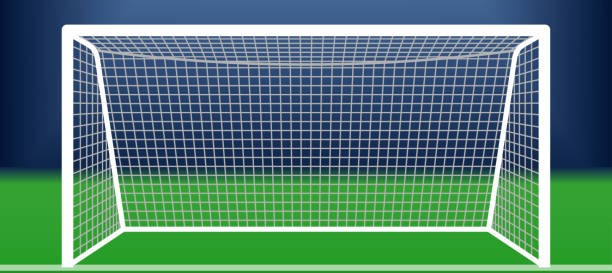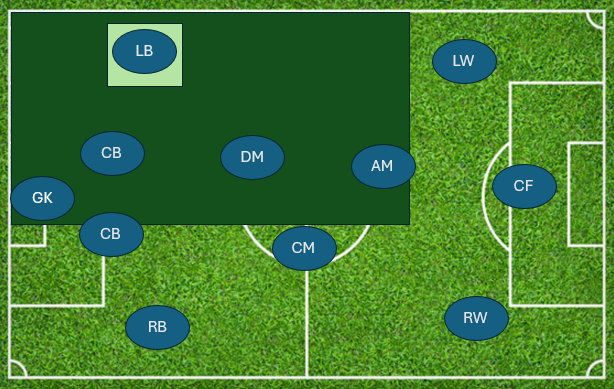













THE LEFT BACK.

The left back is a defensive position in football, playing on the left side of the field. Left backs are crucial
for both defensive stability and attacking support, balancing their responsibilities to protect the goal while contributing
to offensive plays. Left backs and right backs are also called full backs. Here’s a detailed overview of the left back’s
role:
Positioning:
- ▫ DEFENSIVE LINE: The left back typically plays in the defensive line, positioned to the left of the center backs.
Their primary responsibility is to defend against wingers and opposing forwards on that side.
- ▫ WIDE AREAS: They often operate in the wide area of the pitch, maintaining a balance between defending and joining the attack.
Primary Role: Defensive Duties:
- ▫ MARKING OPPONENTS: Left backs are tasked with marking the opposing wingers or wide forwards, preventing them from delivering
crosses or cutting inside.
- ▫ INTERCEPTIONS AND TACKLING: They must be skilled in intercepting passes and making tackles to win the ball back from opponents.
- ▫ COVERING SPACE: Good positioning is essential to cover gaps left by the center backs and ensure defensive integrity.
Support in Attack:
- ▫ OVERLAPPING RUNS: After recovering the ball, defensive midfielders play a vital role in transitioning from defense to attack
by distributing the ball to more advanced players.
- ▫ CROSSING ABILITY: They often make short, quick passes to maintain possession and build up play, helping to relieve pressure on the backline.
- ▫ JOINING THE ATTACK: In modern football, left backs are increasingly involved in the attacking phase, contributing to build-up play and
creating chances.
Tactical Variations:
- ▫ FORMATION INFLUENCE: The role of the left back can vary depending on the team’s formation
- ▫ IN A 4-4-2, the left back typically focuses more on defensive duties, supported by a left midfielder.
- ▫ IN A 3-5-2, the left back may operate as a wing-back, playing higher up the pitch and taking on more attacking responsibilities.
- ▫ WING-BACK ROLE: In formations utilizing wing-backs, left backs are often required to cover large distances, playing a vital role in
both defense and attack.
Skills and Attributes:
- ▫ DEFENSIVE SKILLS: Strong tackling, marking, and intercepting abilities are crucial for thwarting opposing attacks.
- ▫ PACE AND STAMINA: Speed is important for recovering defensively and making overlapping runs. High stamina allows left backs
to maintain their intensity throughout the match.
- ▫ CROSSING ABILITY: Proficiency in delivering accurate and effective crosses from wide areas is essential for creating goal-scoring
opportunities.
- ▫ TECHNICAL SKILLS: Good ball control and passing are important for maintaining possession and contributing to offensive play.
Summary: The left back is a vital position in football, balancing defensive responsibilities with offensive support. They play a crucial role
in preventing opposing attacks on the left side while also contributing to their team's attacking play through overlapping runs and
crossing ability. With a combination of defensive skills, pace, and technical ability, left backs are integral to a team's overall
performance.




























